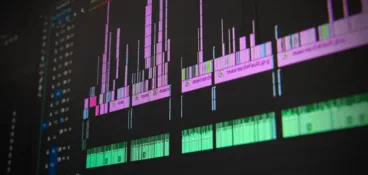The world of work has changed dramatically over the last few years. A study from McKinsey & Company found that 20-25% of workforces have the infrastructure to spend three to five days a week working from home. That’s roughly five times more remote work than before the pandemic.
It seems that “work” is no longer seen as a place you go, but something you do – wherever you are.
This reframing of where work happens has had a huge impact on collaboration. Project teams can no longer rely on bumping into each other in the office or grabbing a quick five minutes by the sofas. Today, project collaboration has to be more deliberate.
In this article, we’ll explore what project collaboration looks like in 2024 and why it’s so important to get things right. And I’ll also offer some tools and tips to set your team up for success.
What is project collaboration?
Project collaboration is the process of teaming up with two or more people on a piece of work. The more people you involve, the more processes you need to make the project collaboration effective.
Team productivity tools play an important role here too. Since the pandemic, more and more companies and project teams have switched to hybrid, remote-friendly, and asynchronous setups. According to Gartner, this has seen the use of collaboration tools increase by 44% since 2019.
Different types of project collaboration
Here are the four main types of project collaboration used by modern companies:
- Real-time project collaboration: You and your team work on something live, discussing ideas and solving problems together. This is especially common with art directors and copywriters in creative teams. But it’s also popular in situations where there’s time pressure and you want to reach a conclusion quickly.
- Asynchronous project collaboration: You and your team divide up responsibilities and each team member completes tasks at times that suit them. This type of collaboration is particularly helpful for teams that span multiple time zones, or if you want to give people the flexibility to work when they feel most effective.
- Face-to-face project collaboration: You and your team get together in the same room or office to work on your project. This could be as simple as two people sitting together at a desk working on a video edit. Or it could be a more formal meeting with multiple stakeholders from across your company.
- Remote project collaboration: You and your team work together from different locations, either in real time or asynchronously. This has become increasingly popular since the pandemic, with 2-in-3 people now working hybrid.
Benefits of great project collaboration
A few years ago, Forbes carried out a study on how collaboration impacts workplace performance. This was their conclusion: “The results showed that simply feeling like you’re part of a team of people working on a task makes people more motivated as they take on challenges.”
As part of a fully-remote marketing team, I couldn’t agree more. We all have different skills and own different targets and topics. But when we rally around one goal together, we become the Optimus Prime of marketing teams.
Here are a few ways team collaboration can transform your projects:
- You have more experience to draw on
- You can divide up tasks to deliver projects faster
- You build better relationships with your teammates
- You can reduce your workload and improve mental health
Let’s look at each of those in a little more detail.
You have more experience to draw on
They say two heads are better than one. But why stop there?
Effective collaboration is about bringing different team members together, each with their own unique skills, backgrounds, and experiences. And the more diverse those team members are, the more inspiration you have to draw from.
Now, imagine you want to create a new website for your company. Let’s look at some of the people who might be involved and what each of them brings to the collaboration:
- Project manager – They’re an expert in task management and team communication. You can trust them to work backwards from the launch date and allocate resources to make sure the job gets done.
- Brand manager – They’re the guardian of the brand’s positioning, personality, and tone of voice. You can expect them to feed your creatives with inspiration and deliver fast feedback on concepts.
- Copywriter – They’ve written dozens of websites in the past and have an instinct for what works and what doesn’t. You can feed them lots of messy ideas and trust them to deliver something that flows.
- UI designer – They know all the latest trends when it comes to web design, and they also know what a developer will be able to achieve within the budget.
- Developer – They know what’s required to get a new website live and can put all the plans in place to make sure your tech stack is ready for launch day.
Of course, every project is different. But if you can build a cross-functional team around a single goal, you’re on to a winner!
You can divide up tasks to deliver projects faster
It’s easier to stay focused and motivated when you’re working on shorter tasks. That’s why the pomodoro technique of working in 25-minute bursts is so popular.
So when it comes to collaborative project management, think about how you can divide up responsibilities between team members. It doesn’t matter if you’re working on a one-week sprint or six-month epic. The more you can break things down into bite size chunks, the better.
To help illustrate this, let me share a real-world example from Filestage. I recently decided to update the calls to action across over 100 blog articles, and they all had to be updated one by one.
Here’s how I divided the project up to get it done faster:
- Pulled a list of the URLs into a Google Sheet
- Created an “Assignee” column and assigned one-third to each of us in the content team
- Created a “Status” column and added checkboxes that could be ticked off as we went
Now, of course, this cut the number of articles I needed to update by two-thirds. But because I could also see my team members checking off their articles, I felt more motivated to stay focused and work faster to help get the job done.
You build better relationships with your teammates
Work can be a lonely business for a lot of people. The rise of hybrid and remote work means that we’re all spending more time in isolation. And even when office work was the norm, many people struggled to build strong connections with their team members.
But collaboration on projects can be a gateway to better relationships. Here’s how:
- You learn more about each other’s skills and experiences
- You gain greater respect and trust for one another
- You start looking out for each other and offering to help when times are tough
- You form friendships that last a lifetime
You can reduce your workload and improve mental health
One of the biggest benefits of project team collaboration is the ability to share a challenge with your team members. This can have a profound (and positive) affect on your mental health. Like they say, “a problem shared is a problem halved”.
If you’re responsible for the collaborative project management process, encourage team members to use each other for support. Even just a quick call or chat to workshop a problem can give someone a boost. If you can spare them some time to share the load, they’re sure to return the favor when the roles are reversed.
Top 10 project collaboration tools
When it comes to project collaboration software, companies are spoiled for choice. You only have to browse our roundup of the 32 best project collaboration tools to see that!
These tools give your team members all kinds of benefits, including:
- Tracking the progress of your project in real time
- Centralizing discussions and decisions about your project
- Automating manual work to speed up progress
- Accessing project information and assets from any device
But if you really want to improve project team collaboration, you need to understand the nuances between these collaborative tools. So, to help you out, I’ve outlined the pros and cons of the 10 best project collaboration tools on the market.
Let’s dive in.
1. Filestage – best project collaboration software for feedback and approval
Filestage gives your project team members a revolutionary new way to manage feedback on their content. Our intuitive tool brings your internal and external stakeholders together to collaborate on the review and approval process.
This specialized virtual collaboration tool takes the hassle and confusion out of this complicated process. And it fosters effective communication and makes life much simpler for your clients.
Finally, you can say goodbye to endless email threads and confusing feedback.
Pros
- In-context comments make for clear feedback that shows up in real time
- Visual annotations bring comments to life and make it clear what needs changing
- To-do lists give your team a clear picture of what needs amending
- Compare versions helps you verify changes by viewing two edits side by side on one screen
- Version history lets you see the full journey of your file from v1 to approval
- Review steps help to make sure your files get approved by the right people at the right stage of the process
- Project dashboards help you keep track of who you’re still waiting to hear from
- Automations reduce manual tasks and speed up content reviews
- Integrations with Dropbox, Google project management apps, Slack, Microsoft Teams, and more make your workflow faster and easier to manage
Cons
- No mobile or desktop app
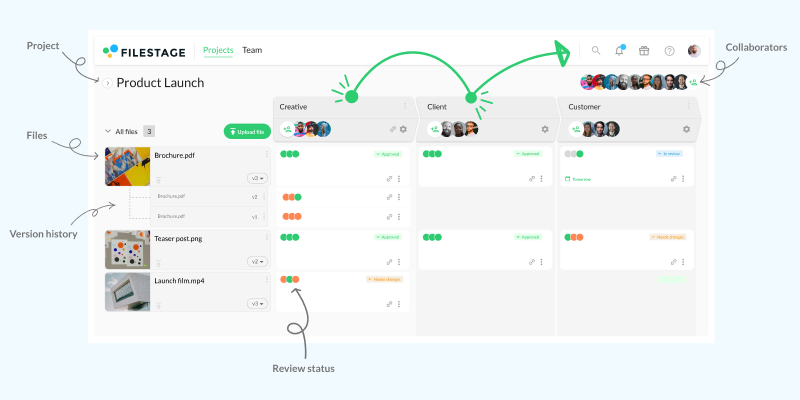
2. Clarizen
Clarizen is a highly configurable project collaboration software that gives businesses the power to manage everything in their organization. It can help them create and plan company goals, and it can enhance management to more effectively execute these goals.
This collaboration tool for project management can be deployed over the web and accessed by mobile applications. Since it offers online support, the tool can be used at your convenience.
This tool is best-suited to enterprise-level project managers who need a flexible project management tool that shows each team member the big picture.
Pros
- It offers immense opportunities for customization.
- It’s a good fit for extremely large teams.
- It provides a detailed breakdown of the structure of work.
Cons
- It has a steep learning curve.
- Its customization options can sometimes cause confusion.
- It can be expensive, depending on the use case.
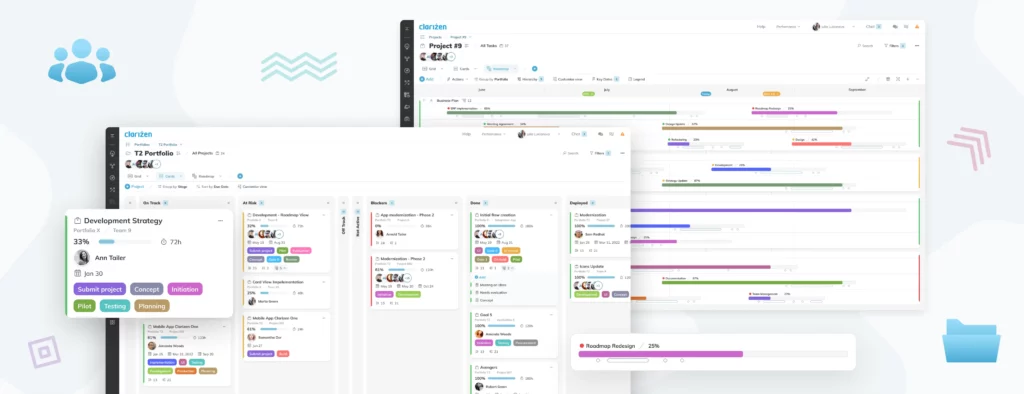
Source: success.clarizen.com
3. Trello
Trello is a highly customizable project management and collaboration software for task management that can help project managers to foster a collaborative team culture. This collaboration tool’s intuitive system of cards, lists, and boards is very simple to use, but there’s also a lot of complexity beneath the surface.
This tool offers a wide range of integrations. And due to its simplicity, it can become a project hub that fosters collaboration.
This tool is for teams of all sizes that need a simple, scalable solution for managing project tasks that won’t break the bank.
Pros
- It’s very easy to get started
- You can view the progress of key project tasks at a glance
- It offers a way to manage tasks that’s visually satisfying
Cons
- If you use a lot of boards, it can get overwhelming
- It doesn’t regularly add new features
- Some of its basic functionalities can only be achieved through integrations

Source: trello.com
4. Bit
Project managers can use Bit to create interactive project spec documentation, product strategy, internal guides, customer-facing guides, product requirement documents, roadmaps, user journeys, prototypes, KPIs, competitive analysis, and much more!
This collaborative project management software helps you work together with your team in real time and store all your project assets in one place for easy and fast access. You can add content from 70+ various applications that will live inside of your Bit documents.
Bit provides a common workplace for connected team members and executives to collaborate, share their knowledge, brainstorm ideas, and innovate together.
This tool is for teams of all sizes that need a common workplace to discuss projects and collaborate on responsibilities.
Pros
- Robust smart search to find anything quickly
- Content and knowledge management
- Wiki
- Simple and modern UI
- Document Tracking
Cons
- No mobile app
- Absence of Gantt charts
- Untimely notifications can be a bit distracting

Source: bit.ai
5. Wrike
Wrike is a project management tool that’s aimed at midsize teams who have at least 20 members. It encourages collaboration with milestone tracking, Gantt charts, and more.
This collaboration software aims at differentiating itself through its enterprise-level security and potential for vast scalability.
This tool is for larger teams that need a suite of sophisticated features that will secure their success.
Pros
- It helps teams stay organized
- The lists are simple to create and view
- Its dependencies are functional and useful
Cons
- It can take some time to start using the tool
- The learning curve is quite steep
- There’s no offline version
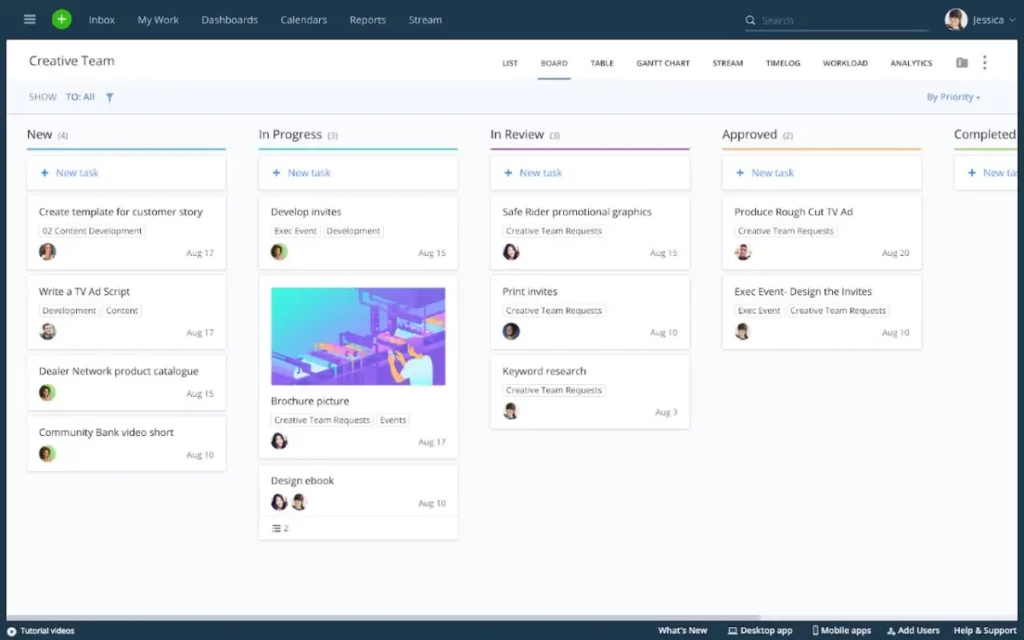
Source: wrike.com
6. Asana
Asana gives project managers a simple way to manage team projects, processes, and tasks. It fosters collaboration by helping your team stay productive and deliver work in a better, faster way.
This team collaboration software has the potential to help you reduce the amount of time you spend switching between meetings, emails, chats, and spreadsheets.
This tool is for teams of all sizes that want to move faster, reduce complexity, and make a bigger impact, in terms of results.
Pros
- It’s easy to share tasks, deadlines, notes, and projects
- The notes are visible, and they can expedite tasks
- The UI and UX are fantastic
Cons
- The pricing structure can be very complex
- The notifications can be intrusive and distracting
- Certain functionalities are complex, so users will need training to employ them
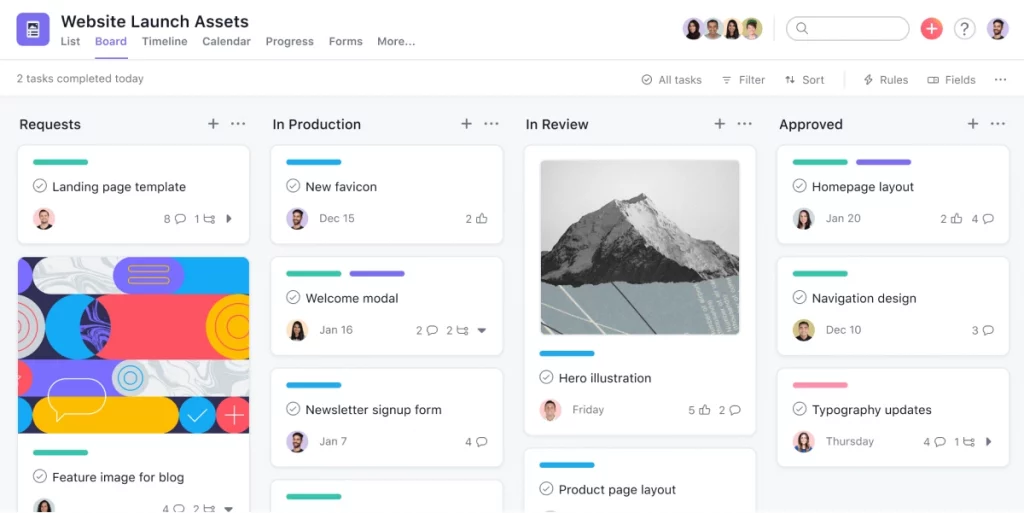
Source: asana.com
7. Basecamp
Basecamp consolidates all of the tools that teams need to finish their work, including message boards, scheduling functionality, to-do lists, group chat, file storage, and more.
This collaborative project platform fosters teamwork and efficiency by putting all of these disparate features under one roof. This goal prevents tasks from slipping through the cracks, and it keeps team members from getting confused.
This tool is for teams of all sizes who want to know exactly what’s going on with their projects at all times.
Pros
- It has competitive pricing, given its functionality
- It’s user friendly for admins and project managers
- It’s easy to see which files are associated with which projects
Cons
- The export feature suffers from a range of problems
- The UX can be confusing for non-administrators
- Basecamp requires a big commitment from every project member
- See all your project’s feedback in one place
- Bring files, versions, feedback, and approvals together with Filestage
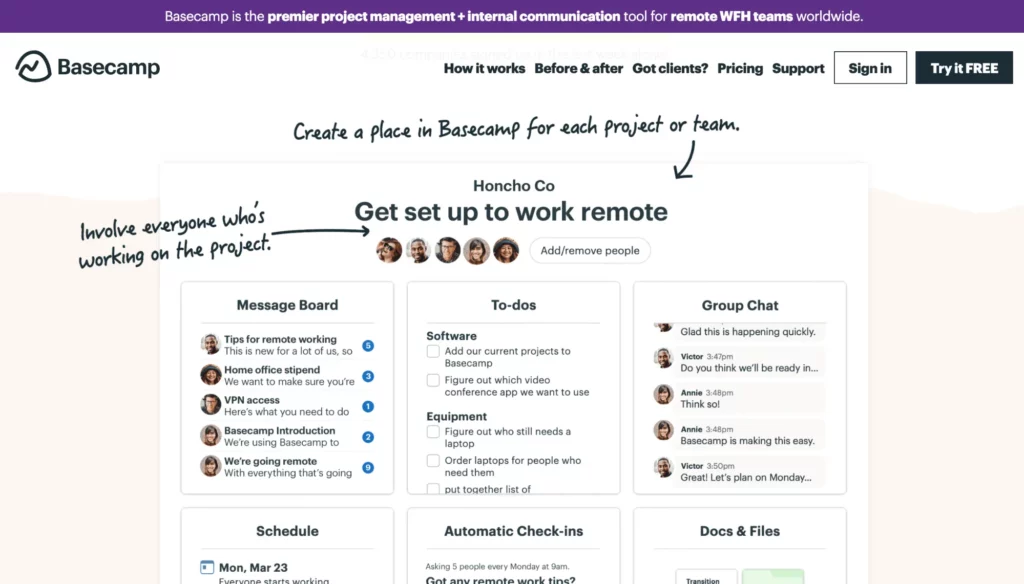
Source: basecamp.com
8. Mavenlink
Mavenlink gives businesses the power to consolidate project management, time tracking, resource management, collaboration, and more.
This vast functionality means that Mavenlink can boost collaboration and insight, which gives teams the information and functionality they need to more predictably and profitably deliver projects.
This tool is for larger businesses that specialize in professional services who want to enhance their results and drive collaboration across the organization.
Pros
- It has some really strong integrations
- You can utilize it to manage many types of projects
- It offers multiple project-status reviews that increase transparency
Cons
- It’s difficult to find out who’s responsible for tasks
- It lacks status options for tasks
- Its mobile experience is poor
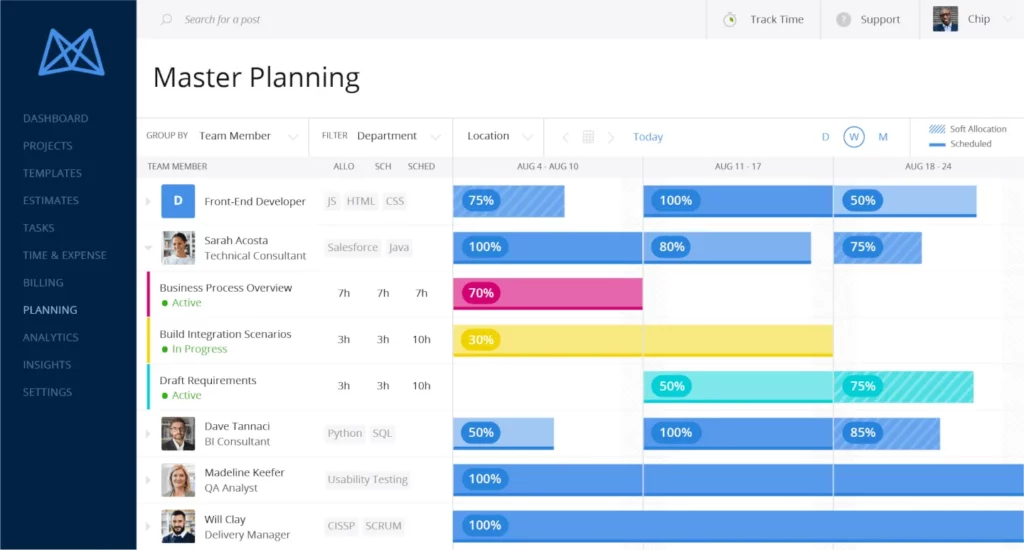
Source: thedigitalprojectmanager.com
9. Easy Projects
Easy Projects is a collaborative project platform that aims at helping fast-moving teams within midsize businesses achieve a faster, more efficient collaboration.
This team collaboration software offers a suite of features that increase transparency and boost the potential for collaboration, including kanban boards, Gantt charts, critical path management, and portfolio management.
This tool is for midsize teams that have outgrown their entry-level solutions and need a more robust offering to achieve collaboration across more complex projects.
Pros
- It’s easy to adjust this tool to established workflows
- Its automatic notifications arrive at appropriate times
- It offers sensible, competitive pricing
Cons
- Its UX is poor for external users
- Its UX is outdated in some key areas
- It can be difficult to locate past projects
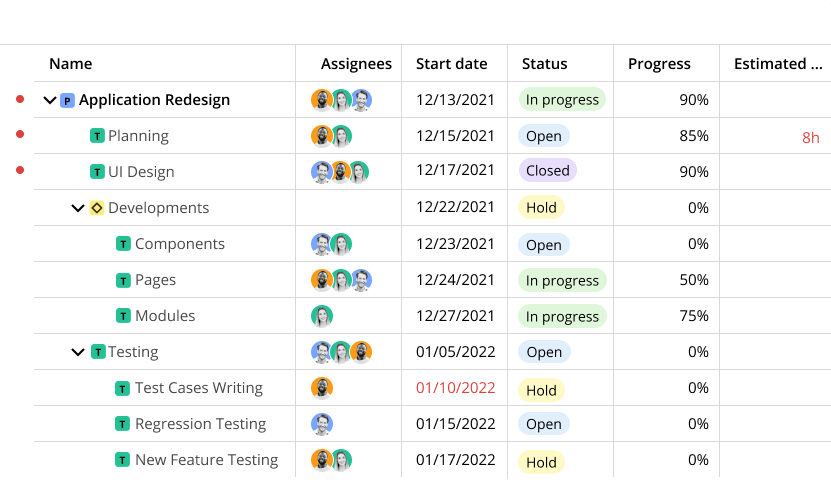
Source: easyprojects.net
10. Scoro
Scoro gives project managers an end-to-end solution for both project and business management. This collaboration software aims at helping project managers control their entire workflow and boost collaboration from a single, central location.
This tool offers a range of collaboration features, such as reporting, real-time dashboards, and task scheduling.
This tool is for businesses that want a single platform for managing projects, time tracking, sales, finances, and reporting.
Pros
- It’s intuitive and user-friendly
- It ensures that users can access appropriate information
- The information it provides is clear and easy to read
Cons
- It can be difficult to find contacts
- It takes a while to fully understand the software
- The price is often very high
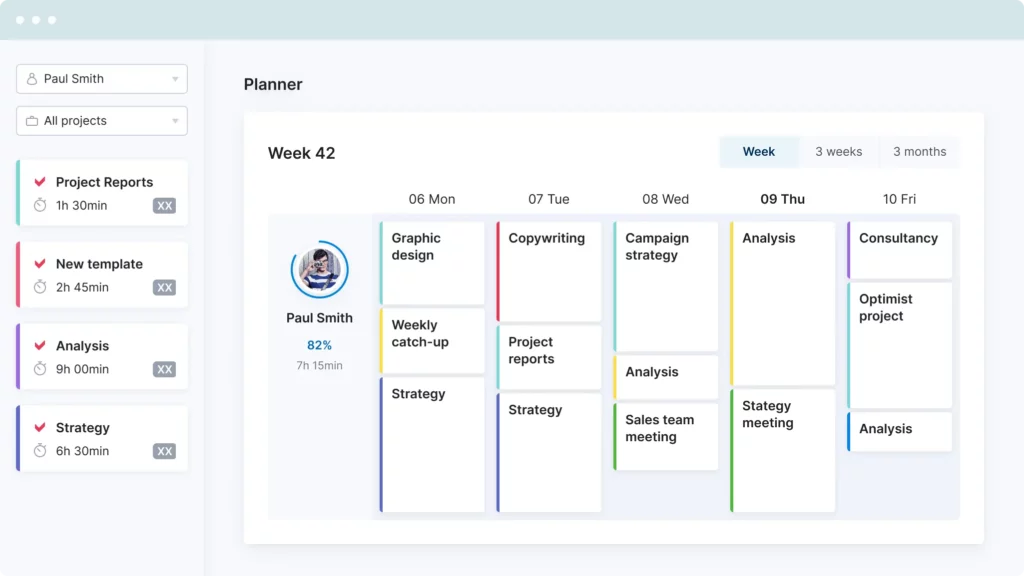
Source: scoro.com
How to set up your project team for success
Over the last 10 years, I’ve worked at advertising agencies and startups ranging from 20 to 2,000 people. And, in that time, I’ve witnessed all kinds of project management styles and been involved with both successes and failures.
To help you make your next project collaboration a winner, I’ve condensed those 10 years down into five handy tips.
1. Define clear roles and responsibilities
When putting together your project team, think about the role each team member is going to play. Then put those roles and responsibilities in writing so that everyone is clear.
When it comes to collaborative project management software, Asana is a great shout here. You can create a project board with a kanban for different stages. Then you can assign tasks to each person so everyone’s clear who’s doing what.
2. Agree on how you’re going to communicate and collaborate
Once you’ve defined your roles and responsibilities, you need to set some ground rules for how you’re going to communicate.
This may sound a little over the top. But if you’re trying to track down a key piece of information a few weeks or months into your project, you need to know where to look!
For an in-house marketing team working on a new campaign, it could look something like this:
- Asana – for managing the project and discussing anything that relates to a specific task
- Slack – for sharing updates in a channel dedicated to the project
- Filestage – for getting collaborative feedback on creative content
3. Set deadlines and hold team members accountable for hitting them
A successful project is like a relay. Every team member has an important part to play. And in most cases, you need to finish one step before you can start the next.
When you assign tasks for your project, be sure to set due dates for each step – and make a point of explaining why the due dates you’ve set are so important.
Here’s how Asana and Filestage can help:
- Asana – set due dates for each task or subtask, and include dependencies so team members know who they’re blocking
- Filestage – set due dates for your stakeholders to give feedback or approval, and send automated reminders as the deadline approaches
4. Hold regular check-ins to make sure you’re on track
Once your project is up and running, it’s important to maintain a healthy level of pressure to keep everyone motivated and engaged.
Here are a couple of ideas to help keep everyone on track:
- Standups – get each team member to share a daily or weekly update of their progress in Slack
- Status meetings – get together for 15-30 minutes each week to discuss progress and agree next steps
5. Establish a supportive and collaborative team culture
Last but not least, project success is all about being there for each other to help keep things moving forward.
Sometimes, life throws things at us that we just can’t avoid. It could be sickness, a family emergency, or even just a sudden spike in your workload.
In those moments, delegating something to another team member can make all the difference. So if you feel that someone in your project team is having a tough time, just ask the question: “Is there anything I can take off your plate?”
Improve and streamline project collaboration with Filestage
Filestage is the collaborative proofing platform that keeps your whole team focused on getting work across the line. With faster feedback, fewer review rounds, and fully-automated workflows, you can spend more time making your work the best it can be.
Get started with our Free plan today – and you’ll also get full access to all our Professional features for the next seven days.




